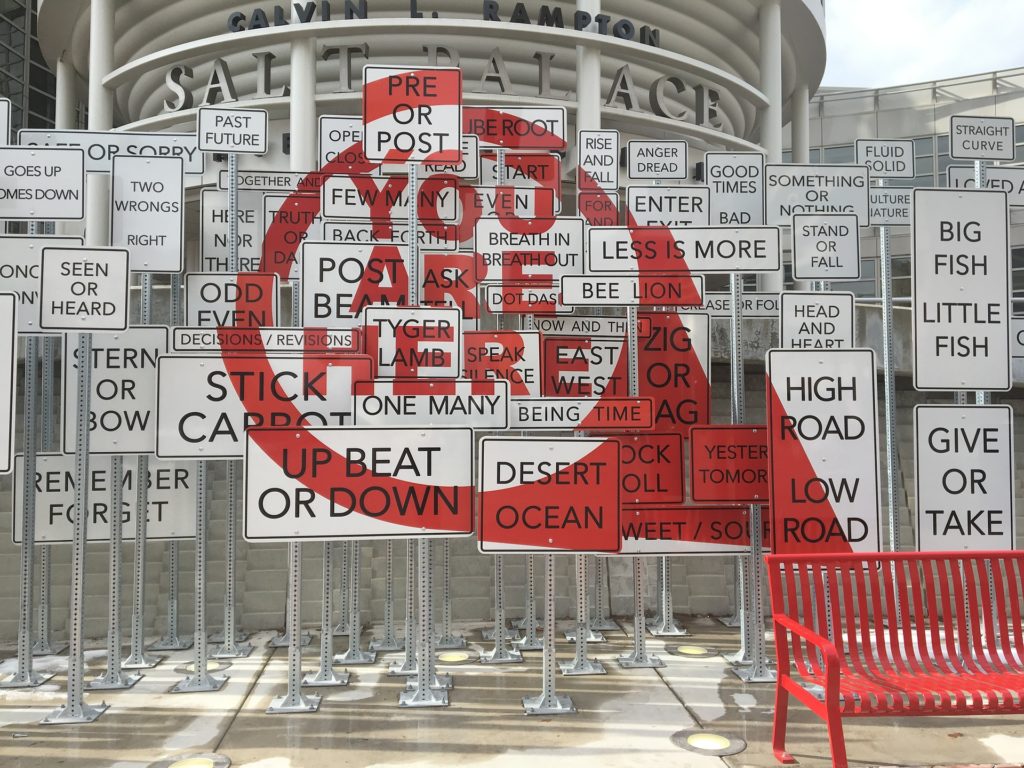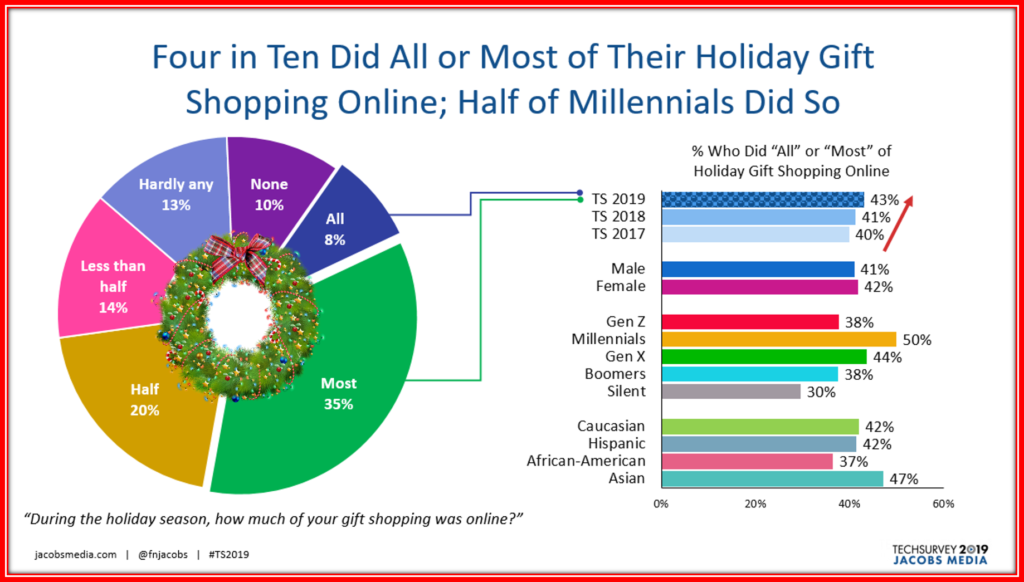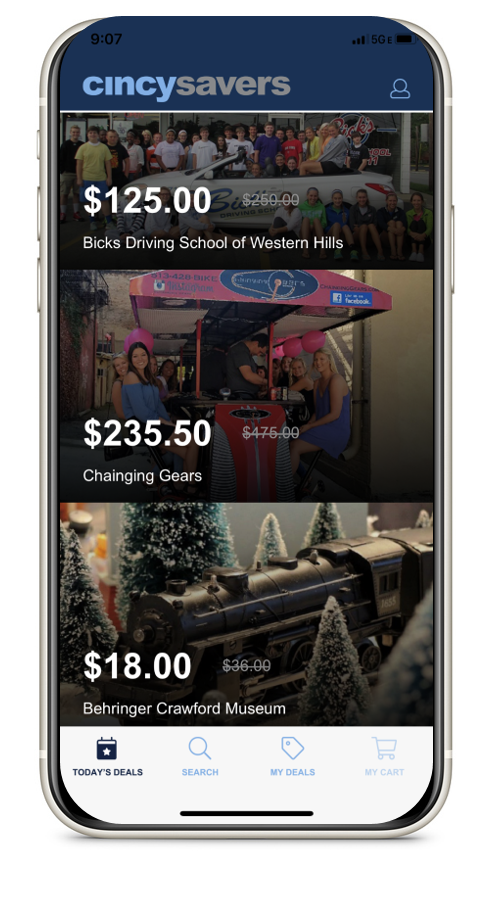
The economic pressure for radio heading into 2020 is becoming obvious and palpable. While broadcast execs preach “live & local” as one of radio’s steel swords, the reality is that most are looking for efficiencies and cost-savings, whether it involves programming, production, on-air, sales, infrastructure, facilities – or all these cost areas.
As radio companies increasingly duke it out with global tech companies like Facebook and Google for local ad dollars, economies of scale become even more important for local broadcasters.
But the irony is that radio’s biggest digital competitors are increasingly turning their turrets in the local direction. Retailers need help. They’re engaged in their own existential disruption, competing against Amazon and other e-commerce companies and discounters. More and more, shoppers are gravitating away from malls and Main Street for online shopping, looking for choice, personalization, ease, and same day delivery. How can a small local company compete?
Google thinks they have the answer, and it’s a clarion call to radio sales managers and strategists to pay attention. The title of a recent story in Retail Wire by Tom Ryan says it all:
“Will Google take ‘going local’ to another level?”
In a Google blog, the company says it’s seen search for “local” and “near me” increased a whopping 350 times over their metrics from just a decade ago. What does that tell you about how consumers see the shopping environment?
To respond to this increased interest in findings nearby places to eat, shop, hang out, and drink lattes within walking distance (or a short drive away), consumers are turning to technology to get geo-mapped instant gratification.
And reading their own tea leaves, Google has come up with two different concepts designed to help local business take advantage of the these changing economic winds: Local and Shopping campaigns.
Here’s how they’re integrating Google Search, Google Display Network, Google Map, and YouTube to appeal to the same hometown merchants your sales team is targeting:
“You provide us with store locations, campaign budget, and ad assets. Using these inputs, Google’s machine learning technology will automatically optimize bids, ad placements, and asset combinations. The result aims to maximize store visits and promote your locations across Google properties and networks.”
Simple, right?
And having your nail salon or hardware store show up with location pins in Google Maps isn’t just compelling and attractive to local business owners – it’s survival.
We won’t know for a few weeks the toll that Amazon and others are taking on brick-and-mortar local businesses, but we can certainly guess. We’ve been asking the holiday shopping question in our Techsurves the past couple years.
Not surprisingly, more and more consumers sitting at keyboards or hunched over their phones this time of year, rather than braving the weather, the traffic, the parking lots, and the crowds.

The icing, as they say, is on the cake.
This new Google technology includes ads, photos, prices, and other information (in-store pickup, delivery options) so consumers can quickly make a decision. From a retailer’s point of view, what’s not to like?
So, what’s the answer for local sales teams, radio sales departments, and clusters who know the turf, have the contacts, and offer other assets – on-location support, on-air commercials and promos, personality appearances – and other tools merchants aren’t going to get from Google?
Isn’t it about strategizing how local radio sales teams can use their knowledge, their footprint, and their technology to help local retailers effectively compete in the e-commerce marketplace?
Eleven or so years into the mobile app revolution, just about every radio station – or radio company – has one. Truthfully, many broadcasters inexpensively checked off the box, launching the most inexpensive app they could find. And while that may have been understandable a few years back, the need to re-imagine how mobile apps can problem-solve for radio brands has never been greater.
Sure, an app will play your stream. Or direct your audience to your podcasts. Or display artist and title information for the music you play.
But mobile is the way for broadcast radio to embrace the local shopping challenge by developing simple apps that are regionally based, including retailers and other businesses offering deals, sales, and other information consumers can process with just a swipe and a glance.
When we started our mobile apps company – jacapps – about 100 days after Apple opened its App Store in the summer of ’08, we envisioned mobile phones could do more than just imitate a Walkman.
We recently designed and launched an app for 2060 Digital – Cincy Savers – that is gearing for this fertile financial turf. And with the power of a strong radio cluster  to drive downloads, deals, and attention, there’s no reason why local broadcasters can’t commit to helping local retailers on their home turf.
to drive downloads, deals, and attention, there’s no reason why local broadcasters can’t commit to helping local retailers on their home turf.
Yes, my company has a horse in this race, but that’s not what this post is about. Mobile is the technology consumers carry everywhere, using it to not just find locations, but deals, sales, inventory, and other ways to spend their money in an economy that continues to boom.
It requires investment, strategy, and teamwork to develop and roll out a retail shopping app, and then populate it with hometown businesses itching to connect their inventories with your audience.
But the benefits are obvious. To establish their ongoing placement in a station or cluster app, retailers pay a recurring monthly fee, creating a sustainable economic model unlike anything radio sales teams have enjoyed. Imagine starting every month with a revenue base that doesn’t eat up precious on-air inventory.
Google is doubling down on local because it sees an economic landscape rich in potential, especially as retailers are being challenged to their very core. Radio should, too.
Local broadcasters are in an even better position to reap these same benefits, thanks in no small part to their time in grade in the market, hometown roots, powerful audience influence, and boots on the ground.
“Local” and “near me” should become part of every radio sales team’s mantra.
You can put a pin in that.
- What To Do If Your Radio Station Goes Through A Midlife Crisis - April 25, 2025
- A 2020 Lesson?It Could All Be Gone In A Flash - April 24, 2025
- How AI Can Give Radio Personalities More…PERSONALITY - April 23, 2025




I like the idea – there’s no reason for radio not to pursue it, although its hard to imagine that radio can compete in the long run with Google at Google’s game.
That said, radio should focus on what Google can’t – everything from appearances to promotions, ect. Sadly, that’s the things that radio can’t really do anymore either. Because of cost cuts. radio isn’t really live and local in most places. And is radio is also too (yep, gonna use the “s” word) stupid to even run some beta tests on going in on live and local to see if they can generate meaningful ROI by leveraging what the digital competitors can’t do.
Its getting harder and harder to root for a radio when it keeps doubling down on failed and demonstrably flawed strategies. The way to compete with Google is to not compete with them head on, but to market services that Google can’t.
Only 7 firing days til Christmas!
Bob, I know convention (OK, maybe cynical) wisdom suggests that cost reductions and layoffs are across the board. And while they are impacting many companies as I write this, not every company is cutting back. Some still have a strong street presence and solid infrastructure. There’s a “there there” for stations and the companies that own them – but it requires a focus on helping local companies market themselves. Thanks for weighing in.